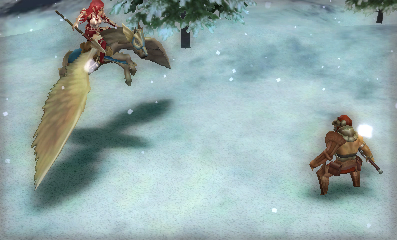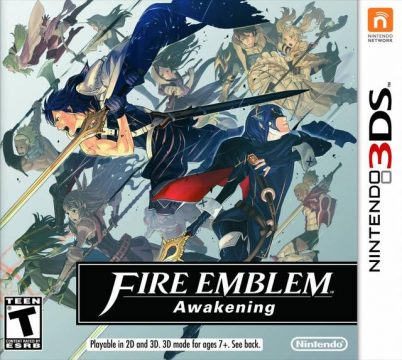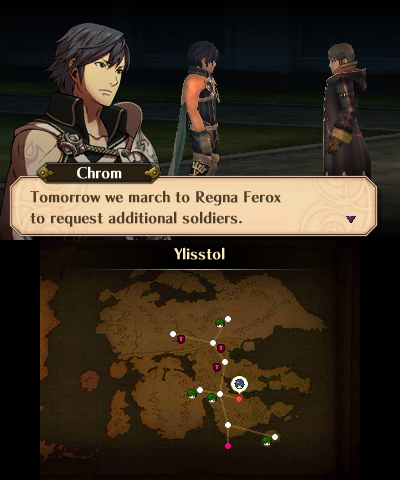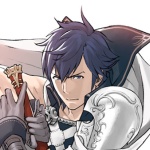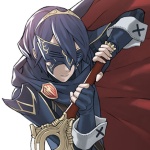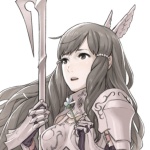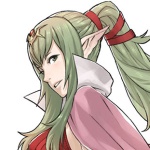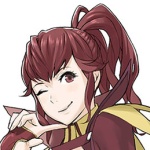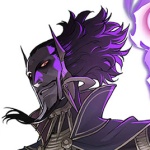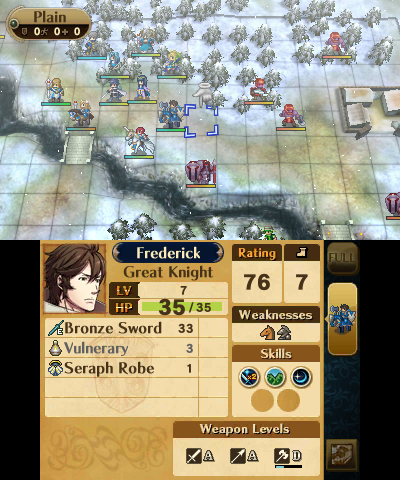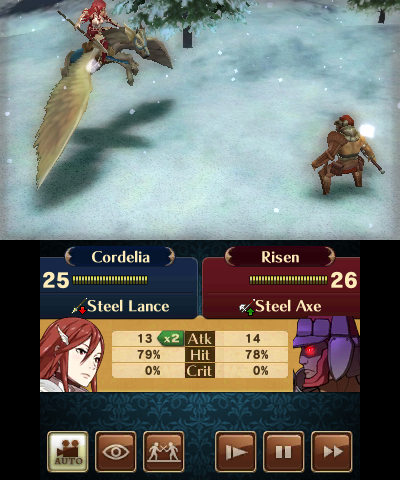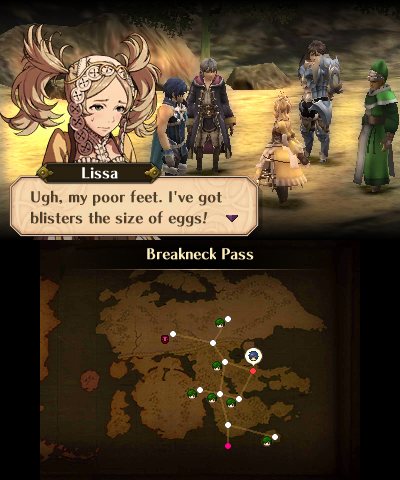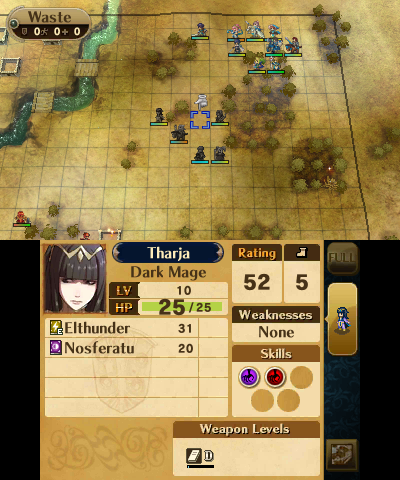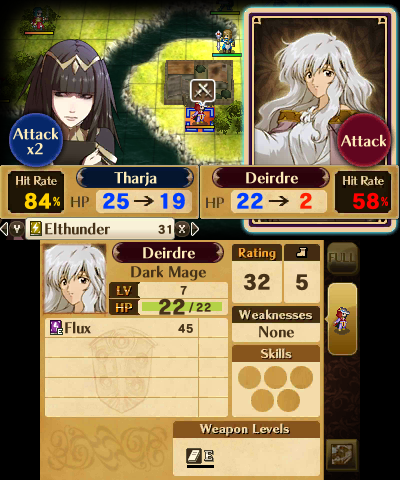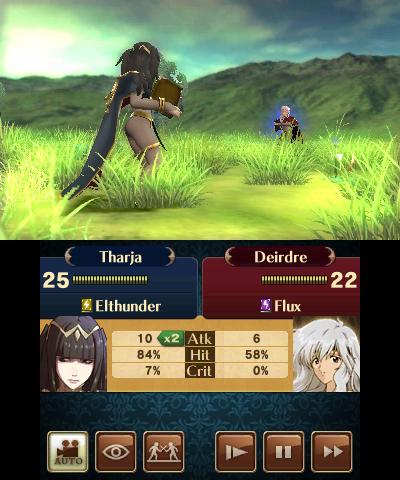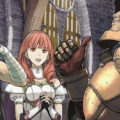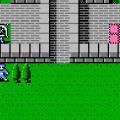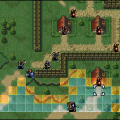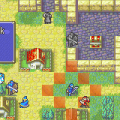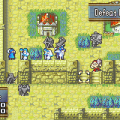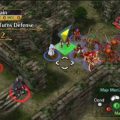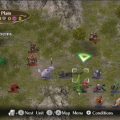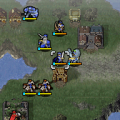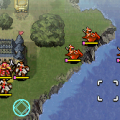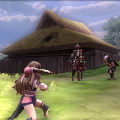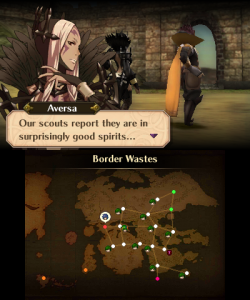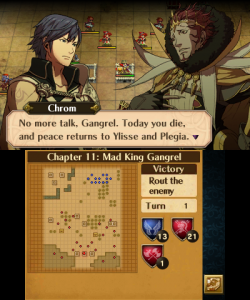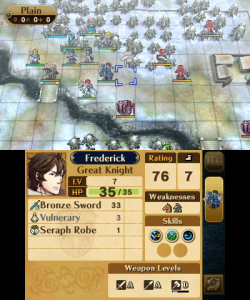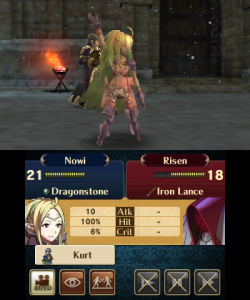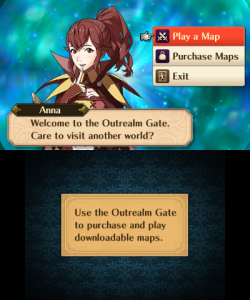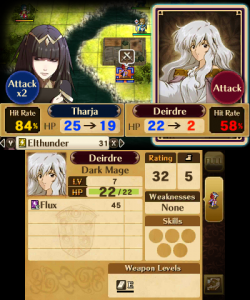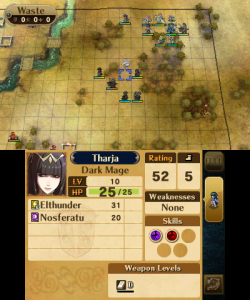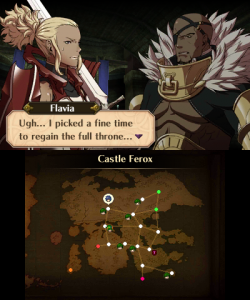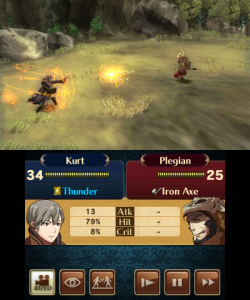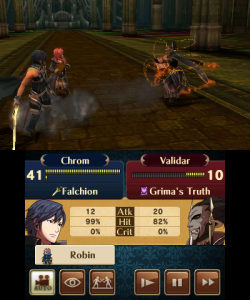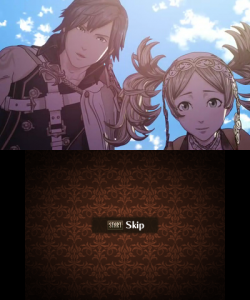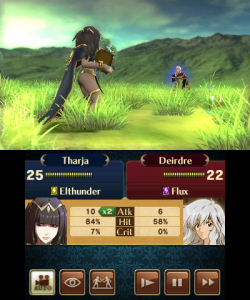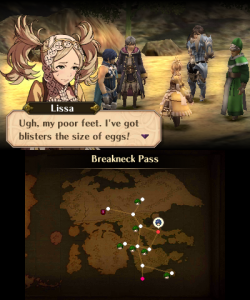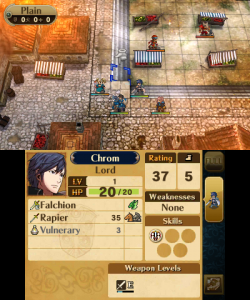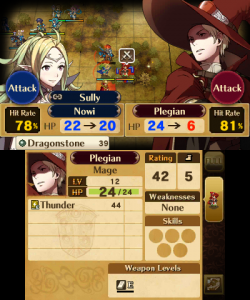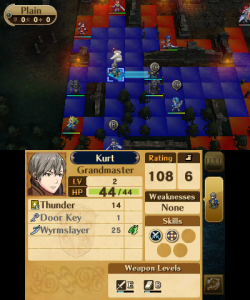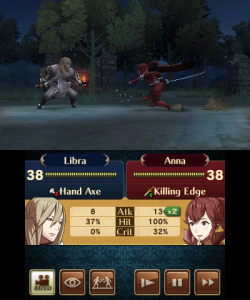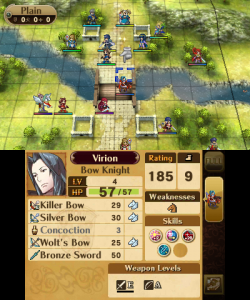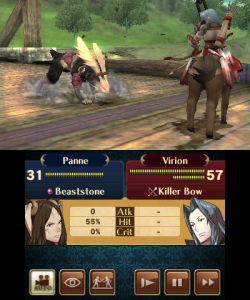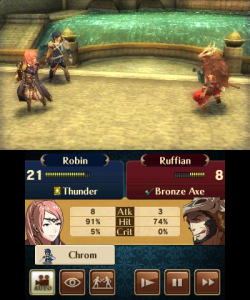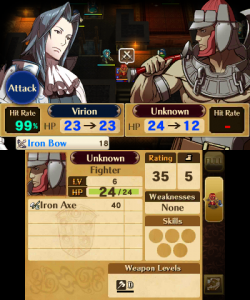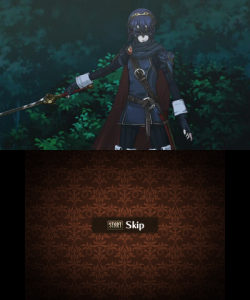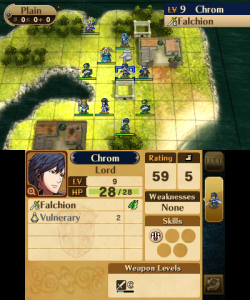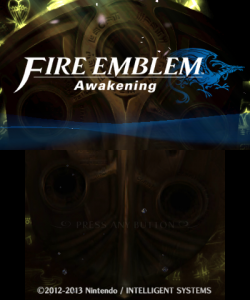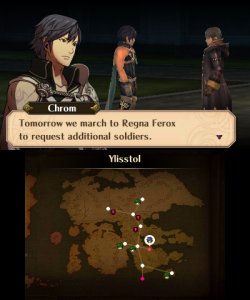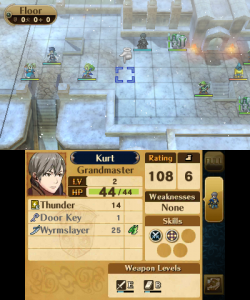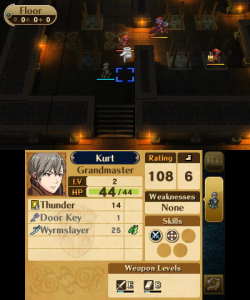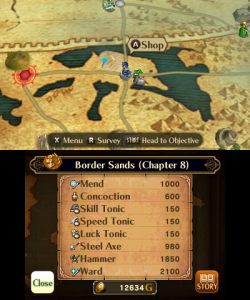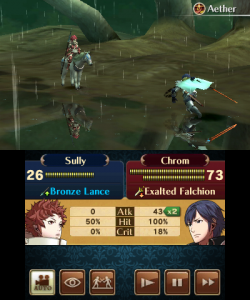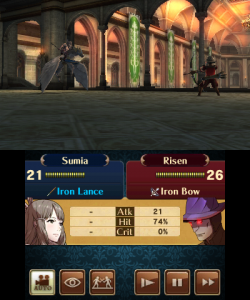- Fire Emblem (Introduction)
- Fire Emblem: Ankoku Ryu to Hikari no Tsurugi
- Fire Emblem Gaiden
- Fire Emblem: Monshou no Nazo
- Fire Emblem: Seisen no Keifu
- Fire Emblem: Thracia 776
- Fire Emblem: Fuuin no Tsurugi
- Fire Emblem (GBA)
- Fire Emblem: The Sacred Stones
- Fire Emblem: Path of Radiance
- Fire Emblem: Radiant Dawn
- Fire Emblem: Shadow Dragon
- Fire Emblem: Shin Monshou no Nazo
- Fire Emblem Awakening
- Fire Emblem: Fates
- Fire Emblem Echoes: Shadows of Valentia
- Fire Emblem (Misc)
With the entirety of Fire Emblem‘s run on the Nintendo DS being spent creating updated releases of Marth’s saga, it was high time to make something new for the series. In 2012, the 13th Fire Emblem release came out on the 3DS in Japan under the name Fire Emblem: Kakusei. One year later, it saw a Western release as Fire Emblem: Awakening.
Awakening takes place in roughly the same time line as Marth’s, but about 2,000 years after his time. The story revolves around Chrom, a descendent of Marth and the Prince of the Halidom of Ylisse (pronounced “ee-leese”), on a continent of the same name, and his followers, a peacekeeping group called the Shepherds, as they find themselves swept up in one war after another with Ylisse’s neighbor, the Theocracy of Plegia, and Valm, an empire from another continent.
Like in Shin Monshou no Nazo, the player once again can create an Avatar (or My Unit) character, who can marry anyone of the opposite gender. Unlike My Unit in Shin Monshou no Nazo, the Avatar here isn’t statistically superior to the other characters, but has almost the entire range of classes and skills available to choose from.
Characters
Chrom
Descendent of Marth, the younger brother of Ylisse’s holy ruler, leader of the Shepherds, and wielder of the legendary sword, Falchion, Chrom is the game’s main Lord. Following the recent trend of Lords that are at least somewhat powerful units, he prefers a good fight over dealing with the politics of his country.
Avatar / My Unit (default name: Robin)
The Avatar is an enigmatic amnesiac who Chrom chances upon, unconscious in the middle of a field. This character is even more of an expansion on Rekka no Ken‘s tactician than Shin Monshō no Nazo‘s My Unit, actually coming up with brilliant outside-the-box tactics and being able to size up an enemy at a glance, despite not knowing where these skills are coming from. The Avatar is arguably Awakening‘s true main character, eventually superseding Chrom as the focal point of the story.
“Marth”
A mysterious masked swordfighter, using the name of the legendary hero-king. Like Chrom, “Marth” also wields the Falchion (a weapon that should be one-of-a-kind) and even has similar fighting styles.
Sumia
The first Pegasus Knight to join the player’s army (though she can reclass to a Cleric and even an Armor Knight, interestingly enough) and an extreme klutz. Apparently, she is Chrom’s primary love interest, as the game tries to convince the player to hook them up on multiple occasions (even using the game’s opening and an animated cutscene toward that end), even though both of them have other romantic choices available…
Tiki
Everyone’s favorite dragon girl is back. She can join after completing a sidequest. Interestingly, her younger self can also be recruited via DLC (meaning the army can have two Tikis), oddly with a great deal more class options than grown-up Tiki.
Anna
Everyone’s favorite menu girl/Secret Shop proprietor is back too, except now she has this Nurse Joy/Officer Jenny thing going, where she has countless sisters who all look exactly alike, are all named Anna, and are all merchants! One of these Annas can actually join the player’s army!
Validar
The bad guy, in case you couldn’t tell just by looking (the dark clothes, the pointed goatee, the red reptilian eyes, the black eye liner… Seriously, they’re not even trying to be subtle). He is the leader of a cult trying to awaken the Fell Dragon, Grima. He also has a certain relationship to the Avatar.
The reclass system from the DS remakes returns, with both a small downgrade and a massive overhaul. This time, all units have only a few classes to choose from, depending in the individual (with the exception of the Avatar and any direct offspring thereof, who can reclass to anything their gender permits) and instead of the preparations menu, it’s done through Second Seal items, which are rare at first, but purchasable at a store later. With a system reminiscent of Final Fantasy Tactics, all classes have two skills that can be learned at certain levels (1 and 10 for unpromoted classes, 5 and 15 for promoted classes, and 1 and 15 for special classes), and those skills are kept, even after a reclassing or promotion. Characters’ levels return to 1 not only upon promotion, but also when reclassing, while the same basic stats are maintained. So by reclassing several times, characters can level up indefinitely, their growth only limited by their stat caps. This isn’t necessarily a bad thing, though, even though if used too much, a unit can become game-breakingly strong, as it means there aren’t really any good units or bad units when all of them have the same potential.
The Generations system, which was introduced in Seisen no Keifu, but had been absent since, finally makes a comeback, albeit in a somewhat different form. Characters can have A-ranked supports with several other characters, but only one S-rank with a character of the opposite gender. When that level is reached, they get married, and via time travel (a concept that is quite outlandish for the series, but then again, so were the undead enemies in The Sacred Stones at the time), their future son/daughter becomes recruitable after a mission that becomes available at one point in the story. As expected, the children characters’ max stats vary, depending on parentage (also, unlike Seisen no Keifu, genetics are somewhat observed; they always have the same character model, but their hair color varies, depending on the father), but they also inherit reclassing options and skills.
A somewhat new feature for the series is the ability to pair up characters into a single unit. It’s similar to rescuing in previous games, but this time, the effects of this are beneficial to the active unit, who receives a slight-to-significant stat boost, depending on how strong the relationship between the two characters is. The other character plays support, blocking enemy attacks for the active character or providing follow-up attacks (the frequency of either also dependent on relationship). While it’s a nice new feature, it does have a flaw, though. Aside from having one less unit to cover the field, pairing up characters has absolutely no negative effects. For example, when pairing up a Myrmidon (a class know for having high speed and little defense) and a Knight (a class known for having high defense and little speed), the Myrmidon would gain a defensive boost, but not lose any speed, while the Knight would gain speed without losing any defense. In other words, it’s all benefits and no drawbacks. This wouldn’t be a negative if the enemies had the same advantage, but they don’t. Since paired up characters can switch active and supporting roles at the start of their action, a weakened character can take on the role of support, thereby being protected. If enemies had the same mechanic, not only would their own weakened units be protected, but the active unit could also have a weapon advantage over the most immediate countering unit, forcing the player to adjust tactics accordingly. Simply put, this could have added a whole new dimension of strategy to the game and is a great opportunity missed.
Another area where Awakening falls somewhat short is the story. It starts out pretty well, but in the middle, it goes into a story arc that is mostly irrelevant to the rest of the plot. It gets back on track with the last handful of chapters, but by then, the damage is done. It would have been better if the beginning arc was expanded upon to cover most of the game and eventually segued into the endgame arc directly.
Awakening‘s cast of characters is relatively small compared to past games (though the number is technically raised by DLC characters, and other players’ Avatars obtained via Streetpass), but it’s a fairly colorful cast overall, with distinct personalities (most of them are extraordinarily quirky by Fire Emblem standards), and while several fall under certain archetypes, they prove endearing enough for the player to care whether they live or die. Like many entries before, once a character stops being relevant to the plot, they stop appearing in cutscenes, seemingly forgotten by the story… but not the player. When shopping and even leveling up, they provide commentary, making their presence known.
All the characters have several support conversations (overall, there are at least well over a hundred in total), giving many opportunities to expand on their backstories and personalities. They do a great job on providing depth to characters that initially come off as one-note, and with a built-in log to replay these conversations once they are seen, trying to see all of them can become an addicting activity. Unfortunately, the background for all the conversations is inside a war room, making it hard to visualize when the dialogue implies the characters are somewhere else, and any development a character is implied to have received in the support interactions with one character is ignored in others (which, granted, is understandable from a technical point-of-view).
There a three difficulty settings and a hidden fourth: Normal, Hard, Lunatic, and Lunatic+. Normal is beginner-friendly and Hard is the standard difficulty for series veterans. Lunatic, however, is a massive leap from Hard. Enemies are both great in number and so individually powerful that newer units, even at the beginning of the game, stand little chance against them, with no middle ground, making the difficulty settings ultimately feel uneven. Even players who beat the game on Hard Mode, will still have a hard time beating even the first chapter without losing a unit. Lunatic+ is basically Lunatic Mode, except the enemies have randomly-determined skills that are always active (including one that causes enemy attacks to always be 100% accurate, rendering half of the strategy behind the weapon triangle and terrain null and void). At this point, it isn’t strategy anymore, but a sheer exercise in luck. Fortunately, Casual and Classic Mode also make a comeback.
Fire Emblem: Awakening has a great deal of DLC that can be obtained via Spotpass (for free) and the eShop (for a price). The former DLC selection contains missions to recruit a few extra characters from the game’s story, legendary weapons from previous games, as well as earlier Fire Emblem characters. They’re called “Einherjar” and appear as official artwork outside of battle, but during combat are Avatar models with blue auras, made to look like those characters. The results are mediocre at best.
Available on the eShop are several different maps with a variety of different themes. Some exist for the purpose of money farming and level grinding, while others throw your army into the middle of a conflict between characters from previous games, provide additional character interactions (and fanservice, but mostly character interactions, contrary to popular belief) not seen in the regular game, show another side of the game’s story, and provide fun extra challenges, the rewards of which include special characters, classes, and skills. These can be accessed early on, and can even be abused to the point of turning the main game’s challenge into a laughable cakewalk (even in Lunatic Mode, to an extent). Even though it comes at a cost, it’s clear the developers had put a lot of work into the DLC. Fortunately, these maps aren’t terribly expensive, costing $2.50-$3.00 individually, or $6.00-$6.50 in bundles of three.
With several different characters, classes to choose for each of them, various skills to customize units with, supports and pair-ups, DLC to make it possible to level up characters to their highest potential, and the Generations system to give the children characters almost endless possibilities for customization within that framework, Awakening could have had a competitive metagame not unlike Pokemon, but that potential simply wasn’t used. The option to have Wi-Fi battles with other players that was present on the DS remakes is absent here, and if there was anything Awakening could have benefited from even further, it would have been that. Instead, players can create teams to battle against or sell equipped items to other players via Streetpass, and while this does give some measure of interaction, it’s ultimately unrewarding, as the player has no means of knowing what the other player had done with the sent data.
The graphics are very good. The maps are beautiful and the overworld sprites are surprisingly detailed. Even better are the animated cutscenes, which look spectacular with the 3D mode on. However, the character models in cutscenes and battles lack feet for some reason, which could be a little distracting to some. The battle animations are fluid, if somewhat awkward at times and a little slow. Thankfully, there is a built-in fast-forward function. Critical hits are shown with character cut-in portraits and a small variation in the attack, which is a bit of a letdown, considering criticals had several neat variations in Seisen no Keifu. While the battle scenes still look neat nonetheless, they do tend to get repetitive after a while. Fortunately, like in previous titles, they can be turned off.
The music is excellent as always and underscores the various situations very well, though most of it isn’t quite as catchy as the tracks in previous games, nor sounds very Fire Emblem-ish.
Overall, in spite of the aforementioned criticisms and nitpicks, Fire Emblem Awakening is still a wonderful, even addicting game; it just had the potential to be even better. Even so, it’s a solid milestone for the series and the new features presented make it a great example for future sequels to follow and expand upon.
In the American release, one piece of artwork of Tharja in a bikini is covered up. Ironically, at first glance, the blanket they tossed over it suggests she’s wearing nothing at all, so it’s an odd choice.
